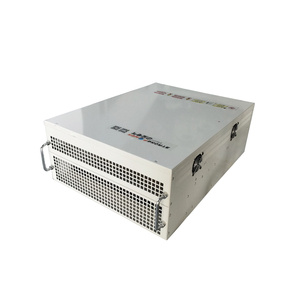(1495 products available)












































































































































































































static var generator are essential components in modern electrical infrastructure, designed to manage and distribute electricity safely and efficiently within various settings. They play a pivotal role in ensuring the reliable flow of power, serving as the backbone of electrical systems in residential, commercial, and industrial environments. These devices are engineered to handle low voltage applications, typically below 1000 volts, and are crucial for maintaining system integrity by preventing overloads and ensuring safety. The evolution of static var generator has led to advancements in technology, offering enhanced features and capabilities to meet the growing demands of today's electrical networks.
There are several types of static var generator available, each designed to fulfill specific functions within an electrical system. Common types include circuit breakers, switchgear, and distribution panels. Circuit breakers are designed to interrupt the flow of electricity in case of overloads or short circuits, protecting both the electrical system and connected devices. Switchgear encompasses a range of devices, including disconnect switches and fuses, used to control, protect, and isolate electrical equipment. Distribution panels, often referred to as breaker panels, serve as the central hub for distributing electricity to various circuits in a building. Each type of static var generator is tailored to specific applications, ensuring optimal performance and safety.
static var generator are equipped with several features that enhance their functionality and ensure safe operation. Key features include overload protection, short circuit protection, and ground fault protection. Overload protection prevents damage to the electrical system by interrupting the current flow when it exceeds safe levels. Short circuit protection quickly disconnects the circuit to prevent damage from excessive currents resulting from a fault. Ground fault protection detects imbalances between the current flowing into and out of a system, minimizing the risk of electric shock. Additionally, advancements in technology have led to smart static var generator with capabilities such as remote monitoring and control, offering improved efficiency and reliability.
The construction of static var generator involves the use of various materials and components, each contributing to the device's performance and durability. Common materials include copper and aluminum for conductive elements, due to their excellent electrical conductivity. Insulating materials, such as thermoplastics and rubber, are used to ensure safety and prevent electrical leakage. Components such as relays, contactors, and sensors are incorporated to enhance functionality and provide precise control over electrical systems. The choice of materials and components impacts the efficiency and reliability of static var generator, making it crucial to select high-quality elements for optimal performance.
Proper use and maintenance of static var generator are critical to ensuring their longevity and reliable operation. To use these devices effectively, it is important to install them correctly according to the manufacturer's specifications and ensure they are suitable for the intended application. Regular maintenance, including routine inspections and testing, is essential to identify potential issues before they become serious problems. This includes checking connections, ensuring proper insulation, and verifying the functionality of protective devices. Additionally, keeping static var generator clean and free from dust and debris can prevent overheating and ensure optimal performance. Educating users on the importance of proper maintenance can significantly enhance the safety and efficiency of electrical systems.
Choosing the right static var generator requires a thorough understanding of your specific needs and the environment in which the equipment will be used. Considerations such as the electrical load, the number of circuits, and the type of building—whether residential, commercial, or industrial—are crucial. The geographical location may also influence your choice due to varying electrical standards and regulations. Evaluating these factors ensures that the static var generator you select will provide optimal performance and safety, while also being compliant with local codes.
Another aspect to consider is the technological features of the static var generator. Modern power distribution equipment often includes smart capabilities, allowing for remote monitoring and control. These features can enhance system efficiency, provide real-time data on energy usage, and facilitate predictive maintenance. When selecting static var generator, it's important to assess whether these advanced functionalities align with your operational requirements and if they offer long-term benefits that justify the investment.
Common types of static var generator include circuit breakers, switchgear, and distribution panels. Circuit breakers protect against overloads and short circuits, while switchgear controls and isolates electrical equipment. Distribution panels, often referred to as breaker panels, serve as the central hub for distributing electricity to various circuits.
Smart features in static var generator provide benefits such as remote monitoring, predictive maintenance, and improved energy management. These capabilities allow for real-time data analysis, helping to optimize energy usage and prevent potential faults before they occur, thereby enhancing overall system efficiency.
The construction of static var generator typically involves materials like copper and aluminum for conductive elements due to their high electrical conductivity. Insulating materials such as thermoplastics and rubber are used to ensure safety and prevent electrical leakage, while components like relays and contactors enhance functionality.
Maintaining static var generator involves regular inspections and testing to identify potential issues. This includes checking connections, verifying insulation integrity, and ensuring the functionality of protective devices. Keeping the equipment clean and free from dust and debris is also crucial to prevent overheating and ensure optimal performance.
static var generator can be customized to meet specific application needs by selecting appropriate materials, features, and configurations. Customization may include the integration of smart technologies, tailored sizing for specific electrical loads, or additional protective features to suit unique environmental conditions or regulatory requirements.